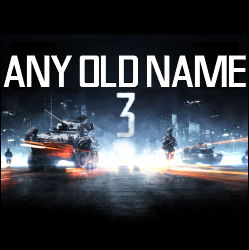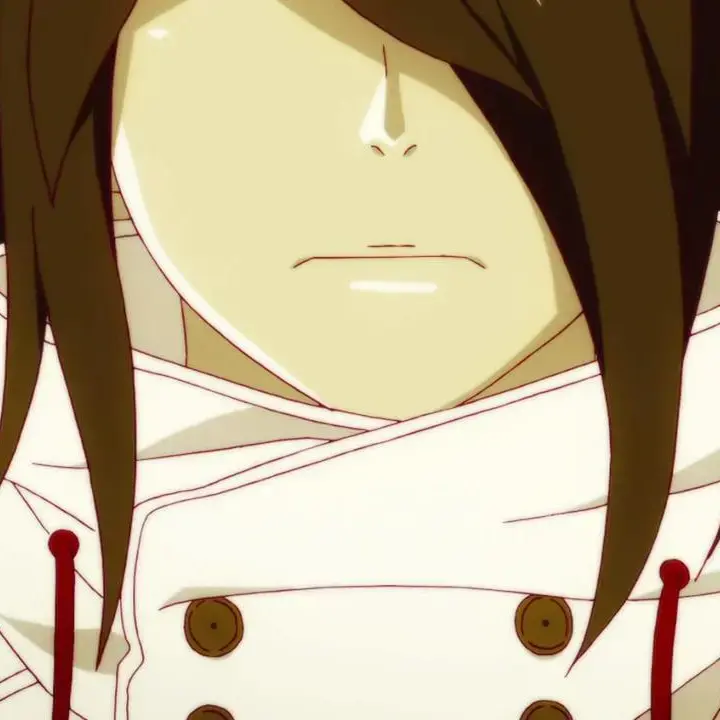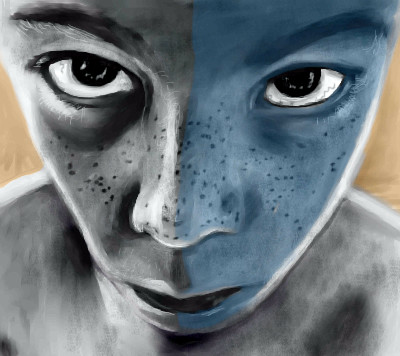Printing “Nintendo” on the device has got to be a bad idea, right?
If you plan to sell it, yes. This is a DYI project.
Per their project page in 2024 they were taking orders to create the shells. Maybe there’s a loophole that exists where the housing is exempt because the internals are DIY.
In any case, money was involved.
RIP
Haven’t there been a lot of individuals being legally warned to stop making/selling/distributing modded hardware?
This one seems different in that the barrier for entry is pretty high, plus the actual finished mod is not intended to be played very heavily.
“Do Yourself It”?
100% a trademark violation, and there’s nothing like an interoperability carveout for trademarks that could be used to defend it.
Here something I always thought was interesting about Nintendo and copyrights.
The Nintendo logo for the original Game Boy (the one that scrolls down) was a way to prevent unlicensed developers from releasing games on the Game Boy.
Games would not boot up if the Nintendo logo is not read on the cartridge and the ROM.
So for a developer to release a game on the Game Boy without Nintendo knowing, they would have to commit copyright infringement.
Source: Reverse Engineering the Gameboy Boot Screen (catskull.net)
The Game Boy was released in 1989, over 36 years ago. They used this same tactic on the Switch. They claim the prod keys, which are needed for Switch emulators, are copyrighted.
So for a developer to release a game on the Game Boy without Nintendo knowing, they would have to commit copyright infringement.
That’d be trademark infringement, not copyright infringement.
They used this same tactic on the Switch. They claim the prod keys, which are needed for Switch emulators, are copyrighted.
That’s not quite the same thing, and still isn’t because the keys are copyrighted. There’s Digital Rights Management software running on the Switch, and part of what it does is decrypt encrypted parts of games with the keys. Originally, Nintendo managed to keep the keys secret, but eventually people managed to extract them. The next line of defence is that under the DMCA (or equivalent law in countries with a trade deal with the US), it’s illegal to attempt to circumvent DRM, and as the keys are capable of doing that, they themselves might count as a DRM circumvention device, which would be illegal to own or share. It’s a legal grey area whether or not they’d really count - lots of companies claim that it’s illegal to have these so-called illegal numbers, but Wikipedia are confident enough that that’s not what the law really says that their Illegal Number page lists a bunch of them.
This gets even more complicated when it’s specifically about emulators, as the DMCA (or equivalent) have a specific carve-out for interoperability, saying you’re allowed to ignore parts of the DMCA if it’s specifically for the goal of making computer software work with computer hardware it wasn’t originally intended to. For the relevant parts of the DMCA that aren’t related to DRM, there’s case law confirming that it’s okay. However, no emulator developers have ever actually been sued for making an emulator for a system with any DRM (e.g. the thing with Switch emulators several months ago was settled out of court, and the threat was to sue them for things like illegally sharing games between developers, when they could have each bought their own copy, so weren’t protected by the carve-out). That means that this is a grey area, too.
If Nintendo wanted to shut down an emulator based on its use of their keys, they’d not only have to set a precedent that the keys really did count as a DRM circumvention device, but also that the interoperability carve-out didn’t apply to DRM circumvention devices. It would be a big, expensive case, and as there are well-funded organisations that rely on the precedent not being set against them in both directions, both sides would get interested third parties funding their legal fees. No one wants that, so Nintendo stick to claiming emulators are illegal on their website, not in court documents, and only go after emulator developers who’ve provably done a second illegal thing they can be punished for.
It would be a big, expensive case, and as there are well-funded organisations that rely on the precedent not being set against them in both directions, both sides would get interested third parties funding their legal fees. No one wants that, so Nintendo stick to claiming emulators are illegal on their website
I would assume particularly that no one who has big interests there wants it to go to court because once there’s a ruling and a precedent is set it becomes much harder to change if you’re on the losing side. So, for example, if game publishers lost and it was clearly ruled legal that consumers have a right to make software work with hardware that the software was never intended for, that would make it much harder for publishers to fight emulators without some additional problem like trademark infringement. The advice I’ve heard is unless you can be absolutely certain how a judge will rule, you want to avoid going to court because strange and unexpected things can happen in a courtroom that can be very bad for you.
I appreciate you took the time to correct me on this. I appreciate the information.
As for me saying copyright infringement, I thought it would’ve be trademark infringement since it is a trademarked logo but the blog post said copyright and they seem to have done their research so I went with that. I figured maybe the code itself for the Game Boy hardware and rom was copyrighted.
Considering they also went after ryujinx that didn’t have a patreon only version for pre-builds, I guess they are pretty secure on getting that DRM circumvention thing.
Not necessarily, they are pretty sure the Devs will fold like a stack of lawn chairs well before any legal precedent can even come into play, especially cause Japanese companies can sue in Japan and basically win by default against foreign defendants.
Because the Gameboy logo check and the actual display of the logo happen separately, there were ways to pass the check while still displaying a different logo on the screen. Given that I bought cartridges from major retailers that did this, I’m guessing that Nintendo either didn’t know about them, or didn’t like their odds in court.
Sega was doing something conceptually similar around the same time, and that did get tested at trial (Sega vs. Acclaim), where the court ruled that Sega could go suck a lemon. So there’s some doubt as to whether any of this is enforceable anyway, although Sega kept including a similar system in their hardware up to and including the Dreamcast.
Of course, a company as large as Nintendo could just bankrupt a lot of smaller companies with legal fees via delaying tactics.
This was also explained in the source I linked.
Interestingly, since the data is read twice, some unlicensed developers exploited that. They would have logo data for something other than Nintendo in the location the logo data was normally stored. So you could boot the Gameboy and see some other logo besides the Nintendo one. But, when the logo data was read again for validation, they would quickly change the logo data to the Nintendo logo. That way, the Nintendo logo was never technically reproduced on screen, yet the Gameboy would still boot. Even more genius if you ask me! Very few unlicensed games were released for the Gameboy (at least here in the states). Here’s the best list I could find of unlicensed games.
Thank you for the info.
Great read, thank you
I just can’t believe that the retro community has not latched onto some trademark moniker at this point to avoid any kind of legal trouble. Tendo? NTDO? I dunno, anything! lol
Chalmers
Neat & Dough
I believe saying something like “compatible with Nintendo Wii games” would be acceptable (as a normative use), but IANAL.
Instant disappointment.
Thought this was a homebrewed Wii system made with modern components.
No.
It’s original Wii system cut-up and repackaged. An actual Wii system gets destroyed each time one of these get created.
So much for preservation…
Repurposing old shit is a lot cooler than hoarding junk and generating new e-waste. The disc reader goes out. Hard drives corrupt saves. It’s an appliance.
deleted by creator
Not really, as that’s emulation. I mean hardware that is smaller than was on the Wii (because it’s newer and we’ve had many years of miniaturisation) and natively runs the Wii system with all its functions.
Yes, the Wii sold millions, but millions is still a finite number.
Doing some sort of equivalent would be very expensive. I imagine getting the chips and redesigning the PCB and its traces could be a lot of money.
Doing an FPGA version would also be the same. People can barely do FPGA accesible for the N64 and PSX, and even then I think there’s limitations with those implementations.
Boards trims of the Wii seem very plausible as the hardware wasn’t as complex as other consoles from the era. I have no idea about sizes, but there’s a chance the Wii has a smaller processor thanks to die shrinks.
There are tons and tons of wiis out there. Chopping a few for a fun project hardly affects preservation.
I mean…so? over 101 million wiis were sold. I think we can wreck a few million before it becomes a problem.
There’s a long history of wii modding that is seeing how much you can cut the board up with it working still
a stripped down WII basically.
Cool, now I can lose a whole gaming system
Nintendo lawsuit can smell this thing from far far away
Next task: put in into an actual cartridge so you can play them on a real Gameboy Color.
I was waiting for this to release! Does it have the wii main menu?
Most of these trimmed down portable Wiis boot into a homebrew menu as they don’t have the IR lights attached by default (the Wii “sensor” bar which is just two IR lightbulbs), needed to navigate the menu using a Wiimote.
Plugging in for a nice Wii menu background vibe
How is this intended to fit in with existing Wii emulators [1]? Is it essentially just trying to offer a more convenient mobile option?
References
- Type: Website. Title: “Dolphin Emulator”. Accessed: 2025-07-12T00:48Z. URI: https://dolphin-emu.org/.
- Type: Text.
Dolphin is an emulator for two recent Nintendo video game consoles: the GameCube and the Wii. It allows PC gamers to enjoy games for these two consoles in full HD (1080p) with several enhancements: compatibility with all PC controllers, turbo speed, networked multiplayer, and even more!
- Dolphin offers emulation for the Nintendo Wii.
- Type: Text.
It’s a novelty. Hardware hackers have been making smaller and more portable Wiis for years, finding more parts of the motherboard they can cut off, ways to rearrange mobo parts and reconnect them without impacting functionality, discrete parts they can replace with more modern smaller equivalents, etc.
This represents the smallest they’ve been able to cut down Wii hardware, still have it be functional, and still have the core be the original hardware, not a general use CPU with an emulation solution running over top. It’s not a commercial product meant to compete with emulators on existing portable devices like phones and SBCs.
- Type: Website. Title: “Dolphin Emulator”. Accessed: 2025-07-12T00:48Z. URI: https://dolphin-emu.org/.
Now make one that can upgrade the Gameboy to play Wii games.
Are you going to help code or fund it?
No, it was a suggestion.
Kawaii is 100% open source, but due to the extremely challenging nature of the build, no assembly guide or build tutorial is provided. [1]
🙁
References
- Type: File. Filename: “README.md”. Publisher: [“GitHub”. “mackieks/Kawaii”]. Published: 2025-07-10T17:04:19.000Z (Commit: “18c0d6b0d30f024fb1e23c5944ff7abf3d194a56”). Accessed: 2025-07-16T03:34Z. URI: https://github.com/mackieks/Kawaii/blob/main/README.md.
- Type: Text. Location: [§“Building One”. ¶1].
- Type: File. Filename: “README.md”. Publisher: [“GitHub”. “mackieks/Kawaii”]. Published: 2025-07-10T17:04:19.000Z (Commit: “18c0d6b0d30f024fb1e23c5944ff7abf3d194a56”). Accessed: 2025-07-16T03:34Z. URI: https://github.com/mackieks/Kawaii/blob/main/README.md.


















